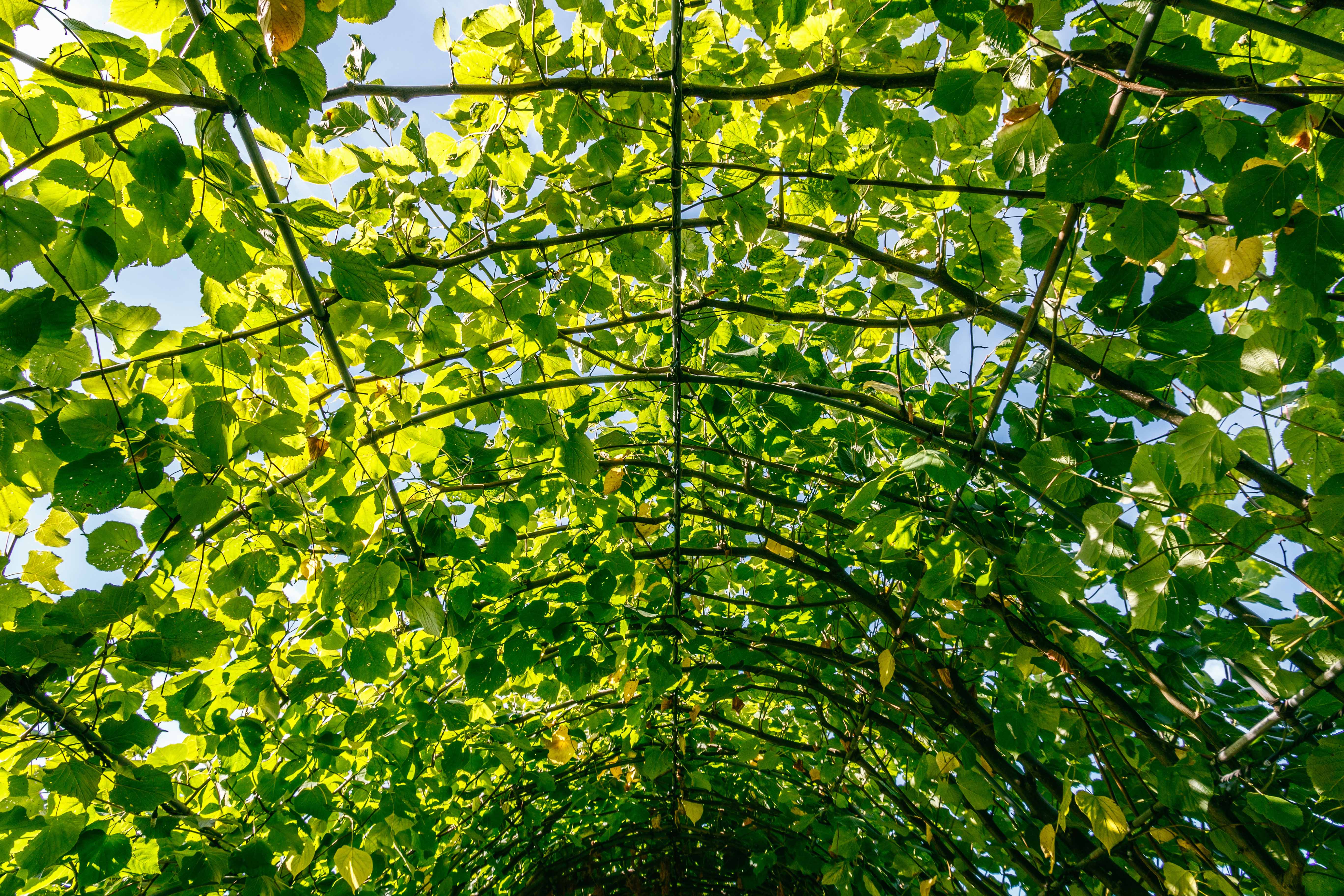Pergolas were originally designed to grow climbing plants. Greening the roof of a pergola brings a decorative and fragrant touch to your garden. Clematis is highly appreciated for its colourful bunches of flowers and scent of orange flower and vanilla. Here is our advice to successfully plant a clematis on a pergola.
What is a clematis for a pergola?
Clematis is among the most highly appreciated climbing plants. And for good reason! There are various sorts of clematis with persistent foliage. Some of them have small flowers (from 3 to 7 cm), some have large flowers (from 10 to 20 cm), others are bell-shaped and still others are star-shaped. As for the colours, you can choose among pink, purple, black, white, red and blue!
This beautiful climber can be fickle, but when correctly planted and cared for, it will beautifully decorate your pergola. Moreover, as this perennial is very tolerant to climatic variations, it is quite easy to care for and grows rapidly.
Of course, like for many species of climbing plants, clematis comes in several varieties. For a pergola, choose one that is rather vigorous, which will enable it to cover your shelter quickly. Like climbing roses, there are climbing and rambling clematis. The climbers flower several times a year, the others only once and are pruned just after flowering.
Planting a clematis on a pergola
Is clematis a demanding plant? The important thing is to plant it in the right place at the right time!
You can choose between planting it in the ground or in a pot – it will flourish in both cases. Nevertheless, the quality of the soil and its exposure are essential to avoid diseases. Choose a sunny place. Southern or western exposure is more than recommended. However, clematis needs to keep its foot in the shade. You can place a tile at its base during very hot weather. Planting it near a small shrub or a hedge will also provide the necessary shade.
As for the soil, clematis prefers cool, well-drained locations. A rich soil obtained with filling soil mixed with potting or ericaceous compost will give it all the ingredients necessary for its proper development. Avoid planting clematis in excessively clayey soil. Clay is its true enemy. If this is the case of your plot, it will be better to plant it in a pot.
When should you plant clematis on a pergola?
Clematis is cultivated in containers, so we would be tempted to say that no period is more favourable than another for planting. However, as these climbers are delicate they appreciate being planted between September and April, avoiding the period of frost.
How do you plant a clematis?
Do you have all the elements in hand and are ready to plant your clematis?
Here are a few instructions to successfully plant your climber and ensure that it flourishes:
- the hole must be 20 to 30 cm from one of the posts of your pergola;
- it must be a least 50 to 60 cm deep and twice as wide as the root ball;
- soak the root ball of the clematis until there are no more bubbles;
- ensure proper drainage by placing gravel at the bottom of the hole;
- when the clematis is well dampened, unpot it delicately;
- place it at an angle, inclined towards its support. You can help it with a stake;
- do not bury the stems over more than 10 cm or you risk waiting a long time for flowering;
- once your perennial is in the ground, add a mixture of potting compost + garden soil and tamp down lightly;
- you can form a watering basin around the foot;
- go lightly on watering. Clematis (like many other climbers) does not appreciate excess water;
- cover the foot with a tile or board.
Caring for clematis on a pergola
The more successfully you have planted your clematis, the easier it will be to care for. Every year, provide it with an adapted fertiliser or compost and dig lightly to mix it with its soil. You can mulch it to ensure the soil remains fresh.
When the flowers have withered, prune the branches and the clematis will bloom even more!
As for plant diseases, the most frequent is a pathogen called Ascochyta Clematidina. This fungus causes a sudden and brutal drying. However, if a rich and healthy potting compost was used when planting and the requirements of the plant are respected, you will avoid this problem.
Also remember to protect your clematis during the winter. To do so, wrap your plant in horticultural fleece up to a height of 50 cm.
Did you know? Too much fertiliser develops the growth of foliage to the detriment of flowers.
Climbing plants to associate with clematis
Numerous climbing plants match perfectly on a pergola. Associating different species enables them to flourish even more and the multiplication of colours and shapes is very decorative.
Among the favourite climbers for pergolas, we find:
- climbing and rambling roses. There are various varieties;
- wisteria, which blooms at the same time as clematis;
- the climbing hydrangea provides an attractive cover and its white flowers enhance the clematis;
- the Virginia creeper is one of the most frequently used ornamental plants;
- jasmine, the yellow colour of which divinely pairs with all the colours of clematis;
- the golden hop, which blooms at the end of summer;
- and, obviously, associating several species of clematis brings natural harmony.
Now you know how to cover your pergola with plants. They are no so difficult to care for. It all depends on their exposure and how you plant them.




